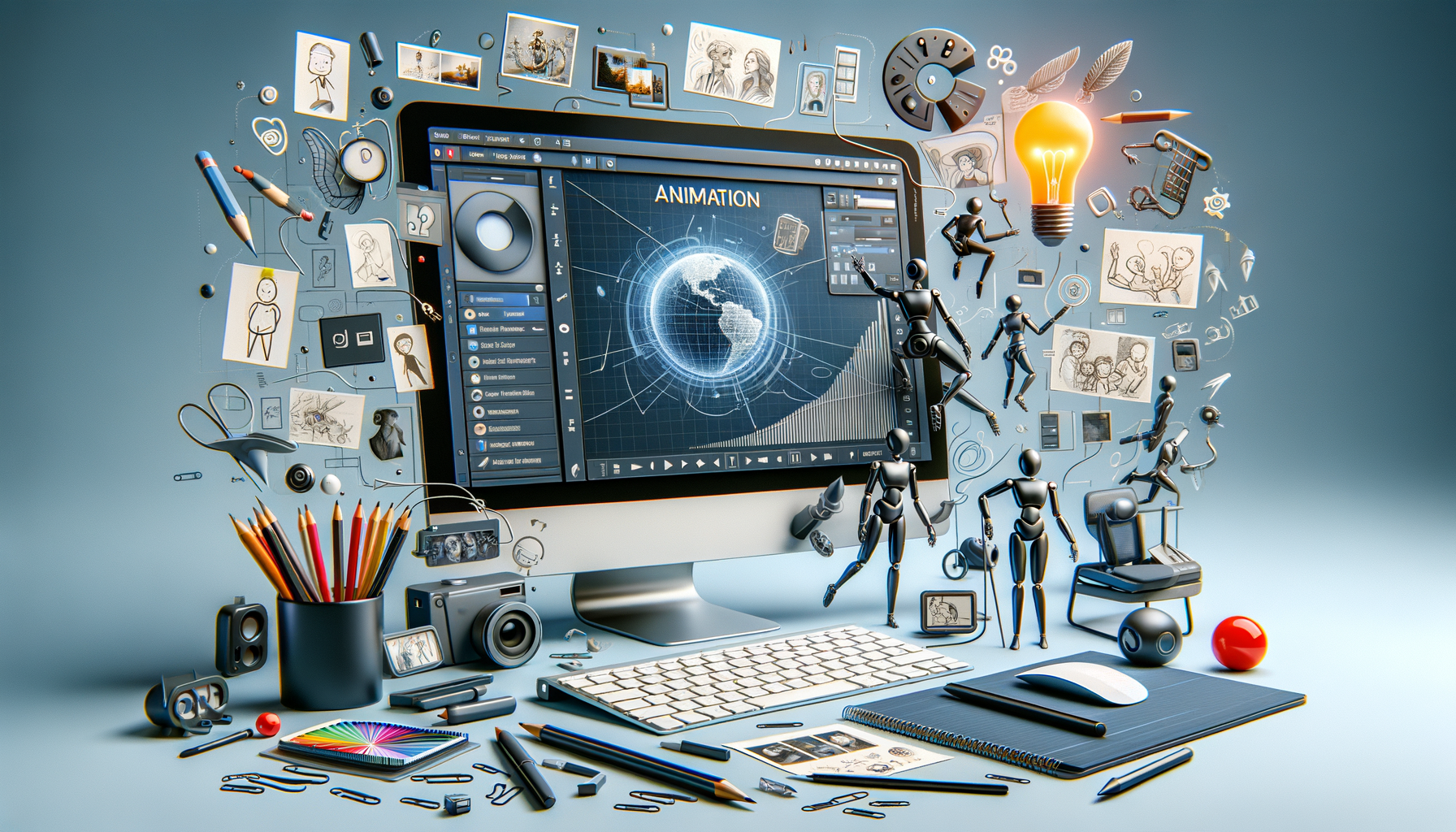
Animation Software: Tools That Bring Ideas to Life
Introduction to Animation Software
In the digital age, animation software has become a cornerstone for creators looking to bring their imaginative ideas to life. From character movement to visual effects, these tools enable artists to transform concepts into captivating animated sequences. Animation software is not just for professionals; it has democratized the art of animation, making it accessible to hobbyists and aspiring animators alike.
The importance of animation software lies in its ability to streamline the animation process, offering a wide range of tools that cater to different styles and techniques. Whether it’s 2D or 3D animation, the right software can significantly enhance the quality and efficiency of the work produced. This article delves into the various aspects of animation software, exploring its features, types, and the impact it has on the animation industry.
Types of Animation Software
Animation software can be broadly categorized into two main types: 2D and 3D animation software. Each type serves different purposes and offers unique features that cater to specific needs of animators.
2D animation software is primarily used for creating flat, two-dimensional images. This type of software is often favored for its simplicity and ease of use, making it a popular choice for beginners. It allows animators to create traditional hand-drawn animations, digital animations, and even complex motion graphics. Some common features include vector-based drawing tools, onion skinning, and timeline-based animation.
On the other hand, 3D animation software is used to create three-dimensional models and animations. This type of software is more complex and requires a deeper understanding of modeling, texturing, and rendering. It is widely used in the film and gaming industries to create realistic characters and environments. Key features include 3D modeling tools, rigging, and advanced rendering capabilities.
Both types of software have their own set of advantages and can be used in conjunction to create hybrid animations that leverage the strengths of both 2D and 3D techniques.
Key Features of Animation Software
When choosing animation software, it’s important to consider the key features that will best suit your needs. Here are some essential features to look for:
- User Interface: A user-friendly interface is crucial for efficient workflow. Look for software that offers customizable layouts and intuitive navigation.
- Animation Tools: Essential tools include timeline management, keyframe animation, and onion skinning for 2D software. For 3D software, look for advanced rigging and modeling tools.
- Rendering Options: High-quality rendering options are vital for producing professional animations. Check for support for various rendering engines and the ability to export in multiple formats.
- Compatibility: Ensure the software is compatible with your operating system and supports integration with other tools you use.
These features play a significant role in determining the ease of use and the quality of animations that can be produced.
Impact of Animation Software on the Industry
Animation software has revolutionized the animation industry by making it more accessible and cost-effective. It has enabled independent creators and small studios to produce high-quality animations without the need for large budgets or extensive resources.
The advent of animation software has also led to a surge in creative content across various platforms, from feature films and television shows to online videos and video games. This has opened up new avenues for storytelling and visual expression, allowing creators to push the boundaries of what is possible in animation.
Moreover, animation software has facilitated collaboration and innovation within the industry. With cloud-based solutions and real-time collaboration tools, teams can work together seamlessly, regardless of their physical location. This has led to more diverse and inclusive storytelling, as creators from different backgrounds and cultures can contribute their unique perspectives.
Choosing the Right Animation Software
Selecting the right animation software can be a daunting task, given the plethora of options available. Here are some considerations to help you make an informed decision:
- Skill Level: Beginners may benefit from software with a gentle learning curve, while professionals might prefer more advanced features and customization options.
- Project Requirements: Consider the type of animation you want to create and choose software that aligns with your project goals.
- Budget: Animation software ranges from free to premium options. Assess your budget and determine which software offers the best value for your needs.
- Community and Support: A strong user community and robust support can be invaluable for troubleshooting and learning new techniques.
By carefully evaluating these factors, you can choose animation software that enhances your creative process and helps you achieve your artistic vision.


